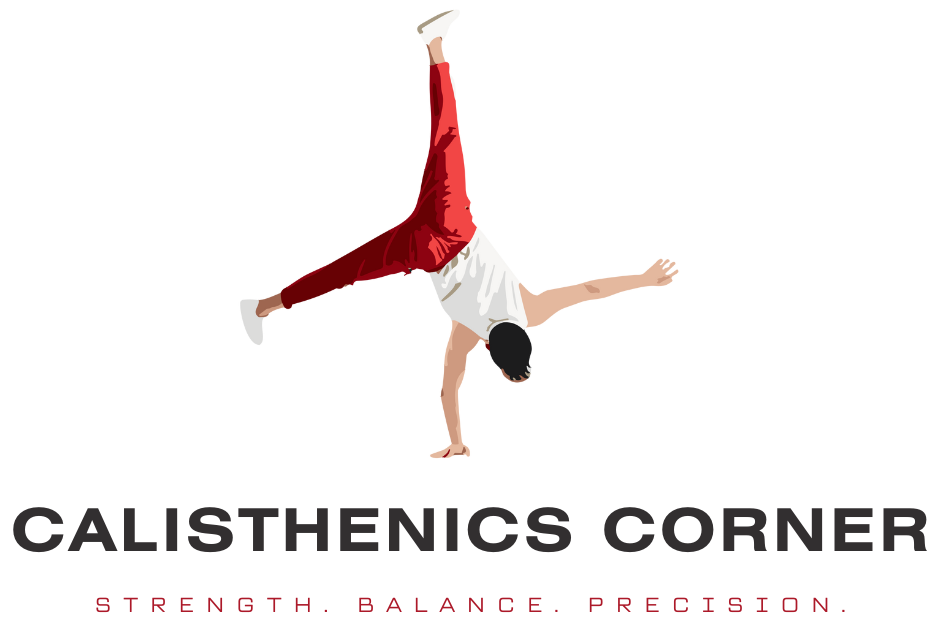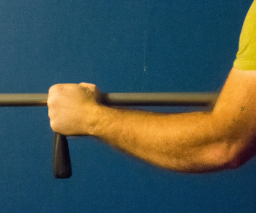If you’re curious about how long it takes to see results from calisthenics, you’ve come to the right place. In this article, we’ll explore the timeline for progress in calisthenics and give you a realistic idea of what to expect. From building strength to achieving impressive bodyweight skills, we’ll break down the time it may take to master the art of calisthenics and unleash your full potential. So, buckle up and get ready to embark on a journey towards a stronger, fitter, and more flexible you with the help of this guide.
Benefits of Calisthenics
Improved strength and endurance
One of the key benefits of incorporating calisthenics into your fitness routine is the improvement in strength and endurance that can be achieved. By engaging in bodyweight exercises like push-ups, squats, and pull-ups, you are using your own body as resistance to build muscle strength. With regular practice, you will gradually increase the number of repetitions you can perform, leading to enhanced muscular endurance. This increased strength and endurance not only improve your performance in calisthenics exercises but also in your everyday activities.
Increased flexibility and mobility
Calisthenics is not just about building strength; it also focuses on improving flexibility and mobility. Many calisthenics exercises require a wide range of motion, such as lunges, overhead reaches, and leg lifts. By consistently practicing these exercises, you can gradually improve your flexibility and mobility, making daily movements easier and reducing the risk of injury. Increased flexibility also leads to better posture, as your muscles become more balanced and your joints can move more freely.
Enhanced cardiovascular fitness
In addition to building strength and flexibility, calisthenics also provides a fantastic cardiovascular workout. Exercises like burpees, mountain climbers, and jumping jacks require continuous movement and elevate your heart rate, improving your cardiovascular endurance. Regularly engaging in calisthenics not only strengthens your heart and lungs but also improves your overall cardiovascular fitness, making everyday activities and other forms of exercise easier to handle.
Factors Affecting Calisthenics Duration
Individual fitness level
The duration of a calisthenics session can vary depending on your current fitness level. Beginners may start with shorter workouts as they gradually build up their strength and endurance. On the other hand, individuals with a higher fitness level may be able to sustain longer workout sessions and push themselves to achieve more challenging exercises. It is essential to listen to your body and adjust the duration of your calisthenics sessions accordingly, ensuring that you are challenging yourself without overexerting.
Workout intensity
The intensity at which you perform calisthenics exercises also affects the duration of your workout. Higher intensity workouts, where you push yourself to your limits and take minimal rest, will naturally have a shorter duration. These intense sessions are effective at maximizing calorie burn, building strength, and improving cardiovascular fitness. However, beginners may need to start with lower intensity workouts to avoid overexertion and gradually increase the intensity as their fitness level improves.
Workout frequency
How often you engage in calisthenics workouts can also impact the duration of each session. If you are working out multiple times a week, you may allocate less time per session to accommodate your overall weekly training schedule. In contrast, if you are training less frequently, you may opt for longer sessions to ensure you are getting enough exercise to see progress. Finding the right balance of workout frequency and duration is crucial for consistent progress and avoiding burnout.
Exercise selection
The specific exercises you choose to include in your calisthenics routine can also influence the duration of your workouts. Some exercises require more time to complete due to their complexity or the number of repetitions involved. For example, performing pistol squats or advanced gymnastics movements will generally take longer than basic squats or push-ups. It is important to mix different exercises in your calisthenics routine to target various muscle groups and maintain engagement without excessively extending the duration of your sessions.
Rest periods
The length of rest periods between exercises is an essential factor in determining the duration of a calisthenics session. Resting for shorter periods, or incorporating active recovery exercises during rest intervals, can help keep your heart rate elevated and maintain a higher intensity throughout the workout. Conversely, longer rest periods may be necessary when performing more challenging exercises or when focusing on strength and power rather than endurance. Balancing the duration of rest periods is crucial to optimize performance and maintain safety during your workouts.
Time Required for a Calisthenics Session
Typical duration
A typical calisthenics session for an individual should aim to last around 30 to 60 minutes. This duration allows enough time to warm up properly, perform a variety of exercises, and include a cool-down/stretching phase at the end. It is important to note that the intensity and complexity of the exercises performed during this timeframe can vary depending on individual fitness levels and goals.
Beginner level workouts
For beginners starting their calisthenics journey, it is recommended to start with shorter workouts, around 20 to 30 minutes in duration. This duration allows novices to focus on learning proper form and technique for each exercise and gradually building up strength and endurance. Starting with shorter sessions also helps prevent excessive muscle soreness and reduces the risk of injury.
Intermediate level workouts
As individuals progress to an intermediate level, they can gradually increase the duration of their calisthenics workouts to approximately 30 to 45 minutes. This longer duration allows for a more extensive repertoire of exercises targeting different muscle groups and challenges the body to adapt and progress further.
Advanced level workouts
Advanced calisthenics practitioners may opt for longer workout durations, ranging from 45 to 60 minutes or more. These extended sessions provide ample time for advanced exercises, intricate movement patterns, and concentrated work on specific muscle groups. Advanced level workouts require a higher level of strength, stability, and endurance, and the longer duration allows for adequate workout volume and intensity.
Efficient Calisthenics Workouts
High-intensity interval training (HIIT)
High-intensity interval training (HIIT) is a popular workout technique that can be effectively applied to calisthenics. HIIT involves alternating short bursts of intense exercise with brief recovery periods. This approach maximizes calorie burn, builds strength, and improves cardiovascular fitness in a shorter duration compared to traditional steady-state cardio workouts. Incorporating HIIT into your calisthenics routine can be as simple as performing exercises like burpees, jump squats, or high knees at high intensity for 20-30 seconds, followed by a brief rest period.
Circuit training
Circuit training is another efficient way to structure calisthenics workouts. In circuit training, you perform a series of exercises back-to-back, targeting different muscle groups or movement patterns. By minimizing rest periods between exercises, circuits keep your heart rate elevated and provide a good mix of strength and cardiovascular conditioning. With calisthenics, you can design circuits with exercises such as push-ups, lunges, squats, planks, and mountain climbers, adjusting the duration and difficulty of each exercise as needed.
Supersets
Supersets involve alternating between two different exercises with little to no rest in between. This technique allows you to efficiently work different muscle groups while reducing overall rest time. With calisthenics, you can create supersets by pairing exercises like pull-ups with push-ups or squats with planks. By performing one exercise immediately after the other, you maintain a higher level of intensity throughout the workout and save time by combining multiple exercises into a single set.
Tabata training
Tabata training is a specific form of high-intensity interval training that follows a strict time format. During a Tabata workout, you perform an exercise at maximum effort for 20 seconds, followed by a 10-second rest period. This cycle is repeated for a total of 8 rounds, resulting in a high-intensity 4-minute workout. While Tabata training can be challenging, incorporating it into your calisthenics routine can be highly efficient, targeting various muscle groups and improving cardiovascular fitness.
Pyramid training
Pyramid training involves gradually increasing and then decreasing the number of repetitions for a particular exercise. For example, you may start with 1 repetition, then increase to 2, 3, 4, and so on until you reach a target number, and then gradually decrease back down to 1. This technique allows you to challenge yourself at different levels of intensity within a single exercise, effectively working on strength and endurance. By combining different exercises into a pyramid-style circuit, your calisthenics workout becomes efficient and engaging.
Maximizing Time Efficiency
Increase workout intensity
To maximize time efficiency during your calisthenics sessions, it is crucial to increase your workout intensity. Focus on performing each exercise with proper form, engaging the target muscles, and pushing yourself to your limits. By increasing the intensity, you can achieve more in a shorter duration, optimize calorie burn, and challenge your muscles to grow stronger.
Combine cardio and strength exercises
To save time and incorporate both cardiovascular and strength training into your calisthenics routine, consider combining exercises that target multiple muscle groups and raise your heart rate simultaneously. For example, combining burpees with push-ups or jump squats with mountain climbers allows you to work on both strength and cardiovascular fitness in a single movement.
Perform compound exercises
Compound exercises involve multiple joints and muscle groups, allowing you to work on multiple areas of the body simultaneously. By including compound exercises like pull-ups, squats, and lunges in your calisthenics routine, you can save time while still effectively challenging your body.
Limit rest periods
Keeping rest periods between exercises to a minimum is essential in maximizing time efficiency. While rest is crucial for recovery, reducing the duration of rest intervals forces your body to work harder and maintain a higher level of intensity throughout the workout. Gradually decreasing rest periods and challenging yourself to take shorter breaks can lead to significant time savings in your overall calisthenics session.
Utilize supersets and circuits
As mentioned earlier, incorporating supersets and circuits into your calisthenics routine helps to reduce rest time, maintain intensity, and target multiple muscle groups in a streamlined manner. By combining exercises and flowing from one movement to the next, you can save time while effectively working your entire body.
Calisthenics vs. Other Forms of Exercise
Comparison to weightlifting
Calisthenics and weightlifting both have their unique benefits, and the choice between the two ultimately depends on personal preference and fitness goals. Calisthenics primarily utilizes bodyweight exercises, while weightlifting focuses on using external weights such as dumbbells, barbells, or machines.
One advantage of calisthenics is that it can be done anywhere, without the need for expensive equipment. It allows for greater flexibility in terms of location and accessibility. Additionally, calisthenics engages multiple muscle groups simultaneously, promoting functional strength and stability. On the other hand, weightlifting often emphasizes isolating specific muscles, which can be beneficial for muscle hypertrophy and targeted strength development.
In terms of time efficiency, calisthenics can be more effective for individuals with limited time or a preference for bodyweight exercises. With calisthenics, you can achieve a full-body workout in a shorter duration by performing exercises that combine strength and cardiovascular training. Weightlifting, while highly effective in building strength and muscle mass, may require additional time for proper warm-up, recovery, and isolation exercises.
Comparison to cardio exercises
Calisthenics offers a unique combination of strength and cardiovascular training, making it an efficient form of exercise that can replace or complement traditional cardio workouts. Traditional cardio exercises such as running, cycling, or swimming primarily focus on cardiovascular endurance and calorie burn. While these exercises have their benefits, calisthenics adds an extra dimension by incorporating bodyweight movements that challenge both strength and endurance simultaneously.
By incorporating calisthenics exercises like burpees, mountain climbers, and jump squats, you can elevate your heart rate, burn calories, and improve cardiovascular fitness while also building strength and muscular endurance. This combination not only saves time by eliminating the need for separate cardio and strength workouts but also provides a more comprehensive and engaging training experience.
Importance of Consistency and Progression
Gradual progression
Regardless of the duration or intensity of your calisthenics sessions, consistency and gradual progression are key to achieving long-term results. Consistency involves regularly practicing calisthenics exercises, sticking to a workout routine, and making exercise a habit. By consistently challenging your body, you allow it to adapt and improve over time.
In addition to consistency, gradual progression is vital to prevent plateaus and ensure continued growth. Gradually increasing the difficulty of exercises, adding repetitions or sets, or reducing rest intervals are all ways to progressively overload your muscles and promote ongoing improvements. By challenging yourself to progress in a structured manner, you can continue to see gains in strength, endurance, and overall fitness.
Tracking progress
To effectively measure your progress in calisthenics, tracking is essential. Keeping a workout journal or using mobile apps can help you record the exercises you perform, the number of repetitions, and any additional notes about your performance or perceived difficulty. By tracking your progress, you can identify areas where you have improved, set realistic goals, and make adjustments to your training plan as needed.
Tracking progress can also boost motivation by allowing you to see tangible results over time. Whether it’s achieving a greater number of pull-ups or increasing the duration of your plank holds, seeing your progress on paper or in a digital format can inspire you to keep pushing forward and striving for new milestones.
Consistency in training
Consistency is not only about showing up regularly but also about incorporating variety and progression into your training. Consistently challenging your body with different exercises, rep ranges, and training techniques prevents stagnation and keeps your workouts exciting and effective. Varying the intensity, duration, and difficulty of your calisthenics sessions ensures that you continue to engage different energy systems and muscle fibers, promoting well-rounded fitness and avoiding plateaus.
Maintaining consistency in your training also extends beyond the physical aspect. It includes maintaining a balanced and nutritious diet, prioritizing rest and recovery, and managing stress levels. By taking a holistic approach to your fitness journey, you can optimize your body’s ability to adapt and progress, improving overall performance and well-being.
Personalized Calisthenics Training
Listening to your body
When engaging in any form of exercise, including calisthenics, it is crucial to listen to your body and understand its limits. Pay attention to any pain, discomfort, or signs of overexertion during your workouts. If an exercise causes sharp or prolonged pain, stop immediately and seek professional guidance. Pushing through pain can lead to injury and hinder your progress.
Additionally, it is important to respect your body’s need for rest and recovery. Overtraining can have negative effects on your muscles, joints, and overall well-being. Adequate sleep, nutrition, and relaxation are vital components of an effective calisthenics training program. By understanding your body’s signals and giving it the care it needs, you can ensure long-term success in your calisthenics journey.
Training according to goals
Another aspect of personalized calisthenics training is aligning your workouts with your specific fitness goals. Calisthenics exercises can be modified, intensified, or adapted to suit various objectives, whether it’s building muscle, improving athleticism, or increasing overall fitness. Understanding your goals and tailoring your training accordingly can help you stay motivated and achieve the results you desire.
For example, if your focus is on building strength, you may incorporate more challenging exercises such as handstand push-ups or muscle-ups. Alternatively, if your goal is to improve flexibility, you may incorporate exercises like deep squats or yoga-inspired movements. By defining your objectives and adjusting your training accordingly, you can customize your calisthenics routine to meet your individual needs.
Seeking professional guidance
While calisthenics can be done independently, seeking professional guidance can provide valuable insights and help ensure proper form, technique, and safety. If you are new to calisthenics or have specific goals that require expert advice, consider working with a qualified personal trainer or joining a calisthenics class or group.
A professional can assess your current fitness level, guide you in setting realistic goals, and create a customized workout program tailored to your needs. They can also correct any form or technique errors, reducing the risk of injury and optimizing the effectiveness of your workouts. With professional guidance, you can progress more efficiently and confidently in your calisthenics journey.

Conclusion
Calisthenics offers a wide range of benefits, including improved strength and endurance, increased flexibility and mobility, and enhanced cardiovascular fitness. The duration of a calisthenics session can vary depending on individual fitness level, workout intensity, workout frequency, exercise selection, and rest periods. By following efficient calisthenics workout techniques like high-intensity interval training, circuit training, supersets, Tabata training, and pyramid training, you can make the most of your time and see significant progress. Calisthenics can be a great alternative to weightlifting and traditional cardio exercises, providing both strength and cardiovascular training in one workout. Consistency and progression are vital to achieving long-term results, and personalized training allows you to tailor your workouts to your goals, listen to your body, and seek professional guidance when needed. So, whether you are a beginner or an advanced practitioner, incorporating calisthenics into your fitness routine is a fantastic way to improve your overall fitness, boost your strength and endurance, and enjoy the numerous benefits this form of exercise has to offer.








